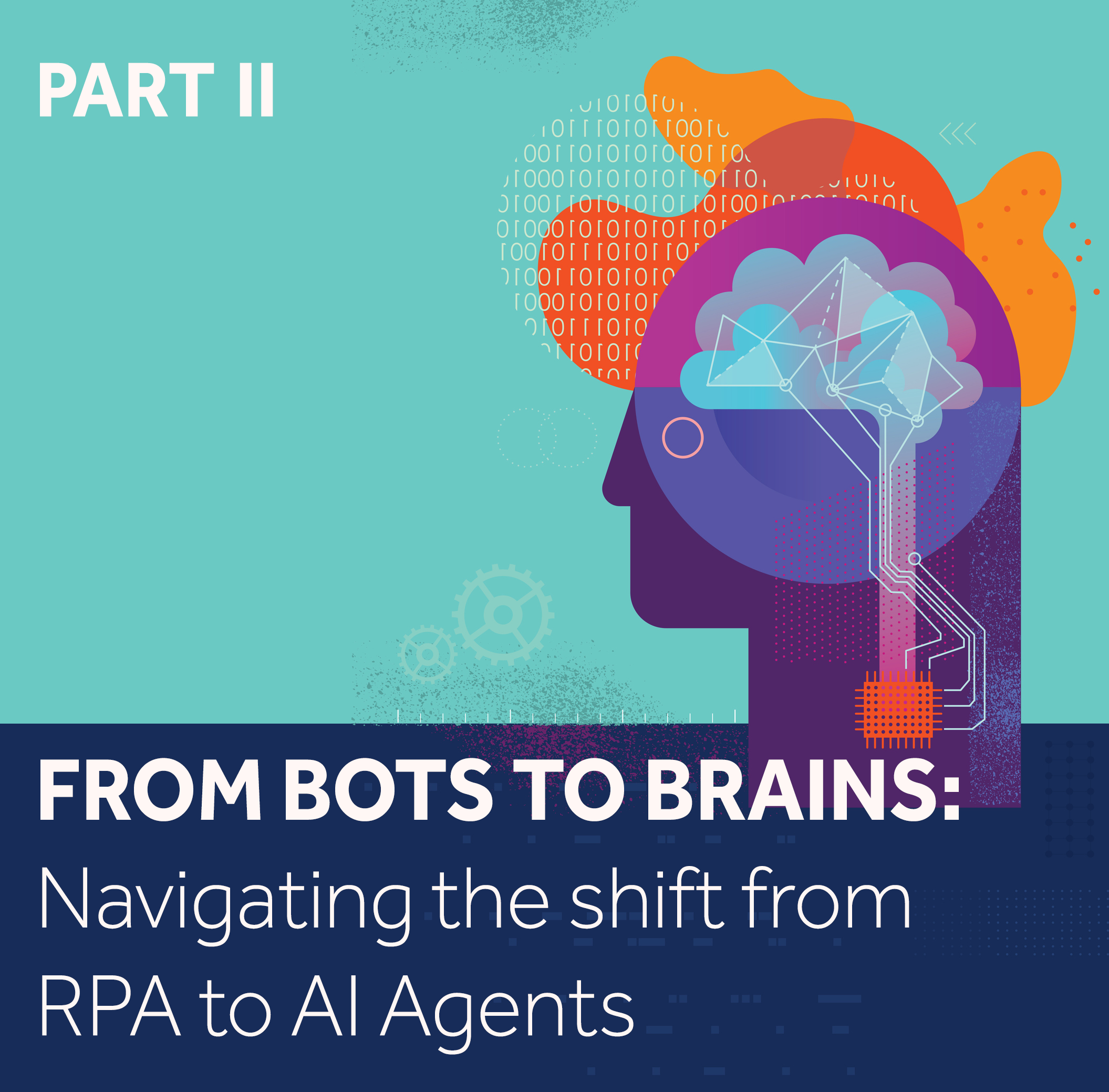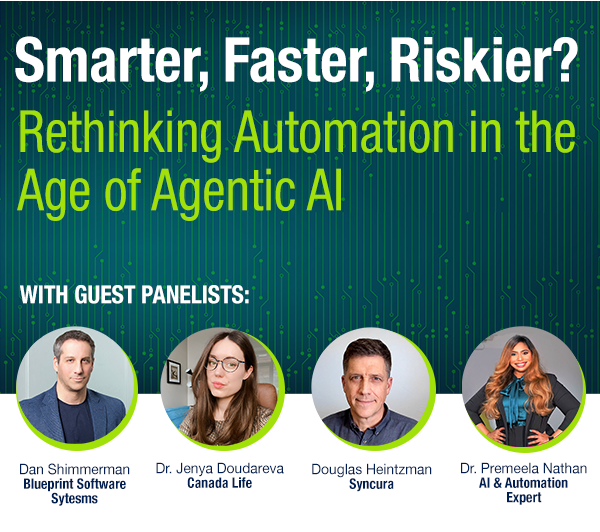The Hype and the Reality—Are AI Agents the Future of Automation?
If you've been paying attention to the automation space lately, it feels like everyone is talking about AI agents. They’re the new face of automation—intelligent, autonomous, and seemingly capable of everything RPA couldn’t do. But before we buy into the promise of digital co-workers that can reason, adapt, and execute seamlessly across systems, we need to ask: is this a true inflection point or just another hype cycle?
This is the first post in our 3-part series, From Bots to Brains: Navigating the Shift from RPA to AI Agents. In this article, we unpack what’s real and what’s inflated, grounding the agentic automation buzz in current enterprise realities.
The Promise of AI Agents
The idea is seductive: agents can interpret natural language inputs, understand user intent, make decisions on the fly, and execute tasks across disparate systems. Unlike traditional bots, they don’t need a rigid script—they learn and adapt. The result? Higher flexibility, fewer handoffs, and potentially fewer people involved in the loop.
Gartner and Forrester both suggest we could be looking at a tenfold growth in automation capabilities with this tech. If that’s true, it could dramatically expand the kinds of work automation is capable of handling.
The Reality Behind the Marketing
Despite these bold predictions, the real-world use of AI agents remains narrow. Much of what’s marketed today as “agentic automation” is simply:
-
RPA with a conversational interface
-
Basic decision trees built around LLM-generated responses
-
Workflow automation rebranded with AI flair
Truly autonomous agent use cases—where systems interpret ambiguous instructions, synthesize data from multiple domains, and resolve complex problems—are rare. They tend to sit at the edges of enterprise needs, not the center.
Why? Because most business processes are still deterministic and rules-based. That’s why they were automated in the first place.
Why the Market's Running Ahead of Itself
There are a few reasons we’re seeing this AI agent surge, even without widespread production use:
-
Vendors are racing to claim leadership in the next wave of automation
-
Decision-makers want to appear innovative
-
Many orgs feel pressured by the fear of missing out—AI is “in,” and nobody wants to look behind
-
There’s legitimate interest and early success in high-value, low-frequency use cases
But just because the tech is exciting doesn’t mean it’s enterprise-ready—or right for every problem.
So, Where Does That Leave You?
For now, most businesses don’t need to overhaul their automation strategy to chase agents. A better approach is to understand where agents could eventually provide value and to begin assessing use cases based on complexity, variability, and the need for judgment.
In the next post in this series, we’ll zoom in on a crucial counterpoint to today’s narrative: RPA isn’t going extinct—it’s just evolving. As AI agents rise, RPA is quietly becoming the foundational layer of intelligent automation.
Closing Thought:
There’s potential in agents, yes—but most of the work still needs doing with the tools you already have. Stay curious, but stay grounded.
Share this
Recent Stories

Rethinking RPA Migration: Smarter Moves, Less Rework, Better Outcomes

Why RPA Isn’t Going Anywhere—It’s Just Going Undercover




